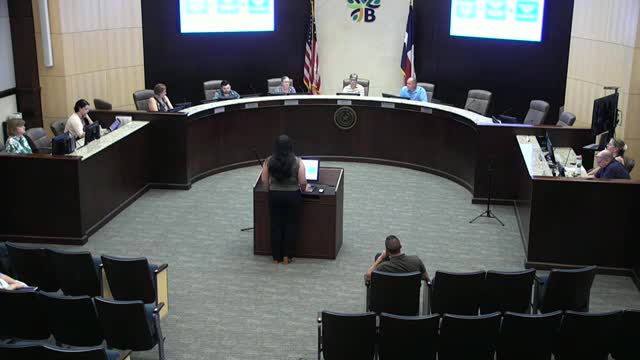Historic Landmark Commission reviews sign variances for Main Street business
June 09, 2025 | Boerne, Kendall County, Texas
This article was created by AI summarizing key points discussed. AI makes mistakes, so for full details and context, please refer to the video of the full meeting. Please report any errors so we can fix them. Report an error »

In the heart of Boerne, Texas, the Historic Landmark Commission convened to deliberate on a significant proposal that could reshape the visual landscape of its historic district. The meeting, held on June 9, 2025, focused on a request for new signage at a building located at the bustling intersection of Main Street and East San Antonio, a structure with a rich history dating back to its original construction as a drugstore in 1967.
The applicant, Mason Meins, presented a sign package that includes three distinct components: a hanging sign, an attached canopy sign, and a wall sign. Each sign is designed to complement the building's Hill Country commercial architectural style, featuring a stucco and masonry facade adorned with decorative metal stars. However, the proposal has raised eyebrows as it exceeds the allowable sign area and projection limits set forth by the city’s Unified Development Code (UDC).
The total proposed signage amounts to 82 square feet, significantly surpassing the 25 square feet permitted for tenant spaces with 50 feet or less of frontage. The hanging sign, which projects four feet from the building, also requires a variance since the UDC restricts such projections to 60% of the canopy width, equating to three feet in this case. Despite these discrepancies, the signs have been deemed appropriate in design and compatible with the historic district's guidelines.
During the meeting, Meins defended his proposal by highlighting similar signs in the area that exceed UDC limits, suggesting that his request aligns with the community's established visual standards. He emphasized that the design intent of his signs is consistent with the historic character of Boerne, aiming to enhance rather than detract from the district's charm.
The commission's role is to assess whether the proposed signs meet the design intent of the historic district while adhering to technical standards. If the Historic Landmark Commission approves the certificate of appropriateness, the proposal will then move to the Design Review Committee, which holds the final authority on granting the necessary variances.
As the meeting concluded, the commissioners were left to ponder the balance between preserving the historic integrity of Boerne and accommodating the evolving needs of its businesses. The outcome of this proposal could set a precedent for future signage in the district, making it a pivotal moment for both the applicant and the community.
The applicant, Mason Meins, presented a sign package that includes three distinct components: a hanging sign, an attached canopy sign, and a wall sign. Each sign is designed to complement the building's Hill Country commercial architectural style, featuring a stucco and masonry facade adorned with decorative metal stars. However, the proposal has raised eyebrows as it exceeds the allowable sign area and projection limits set forth by the city’s Unified Development Code (UDC).
The total proposed signage amounts to 82 square feet, significantly surpassing the 25 square feet permitted for tenant spaces with 50 feet or less of frontage. The hanging sign, which projects four feet from the building, also requires a variance since the UDC restricts such projections to 60% of the canopy width, equating to three feet in this case. Despite these discrepancies, the signs have been deemed appropriate in design and compatible with the historic district's guidelines.
During the meeting, Meins defended his proposal by highlighting similar signs in the area that exceed UDC limits, suggesting that his request aligns with the community's established visual standards. He emphasized that the design intent of his signs is consistent with the historic character of Boerne, aiming to enhance rather than detract from the district's charm.
The commission's role is to assess whether the proposed signs meet the design intent of the historic district while adhering to technical standards. If the Historic Landmark Commission approves the certificate of appropriateness, the proposal will then move to the Design Review Committee, which holds the final authority on granting the necessary variances.
As the meeting concluded, the commissioners were left to ponder the balance between preserving the historic integrity of Boerne and accommodating the evolving needs of its businesses. The outcome of this proposal could set a precedent for future signage in the district, making it a pivotal moment for both the applicant and the community.
View full meeting
This article is based on a recent meeting—watch the full video and explore the complete transcript for deeper insights into the discussion.
View full meeting
